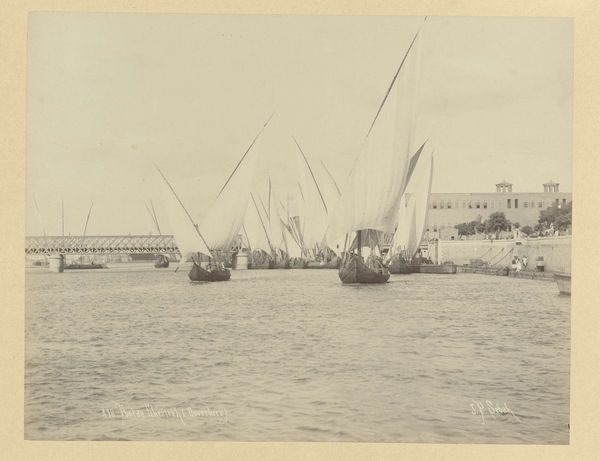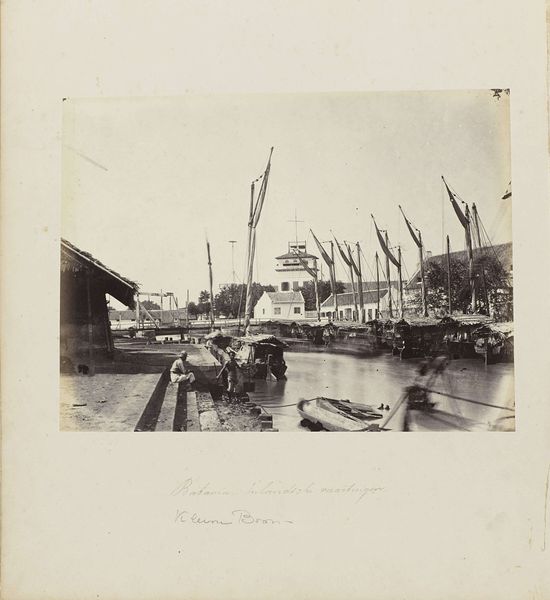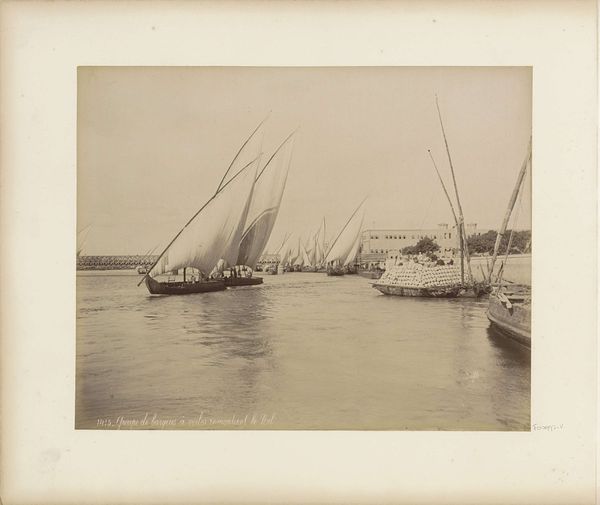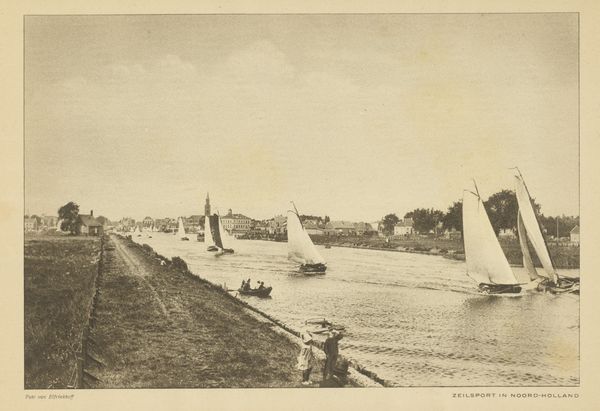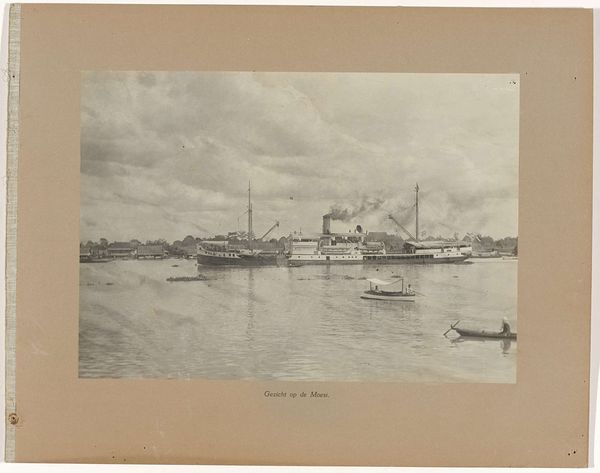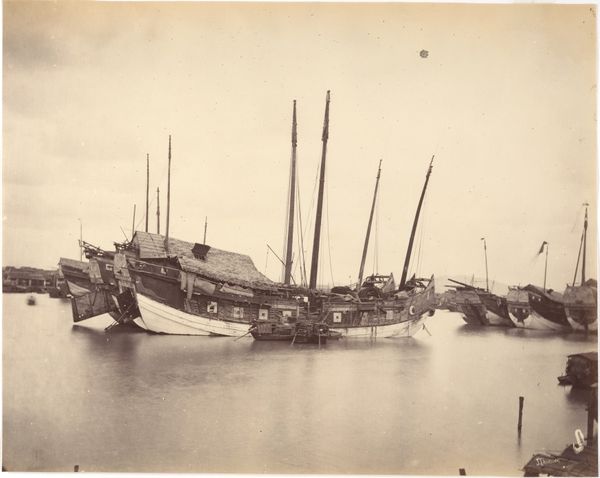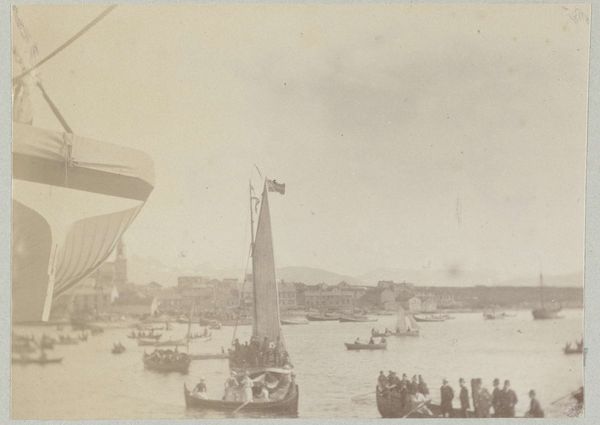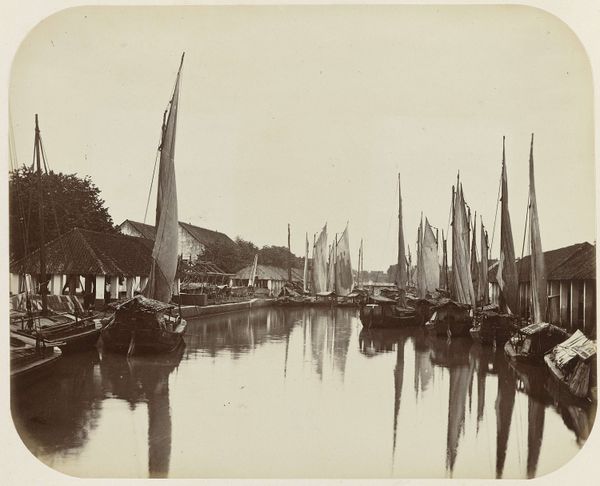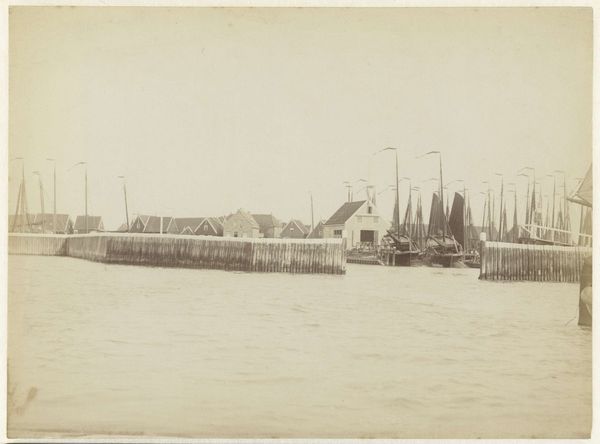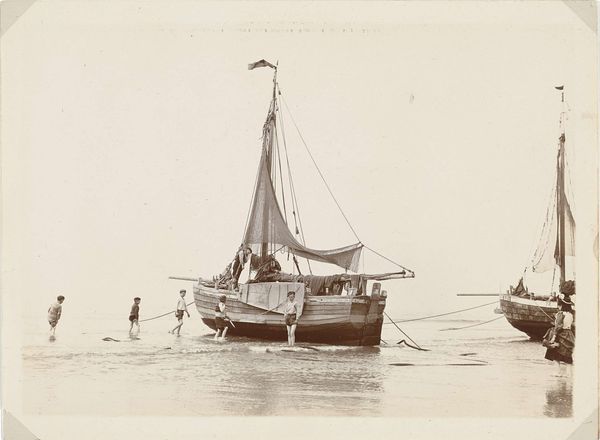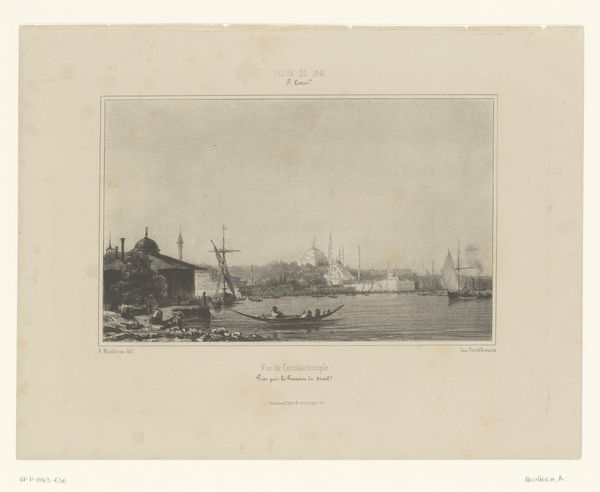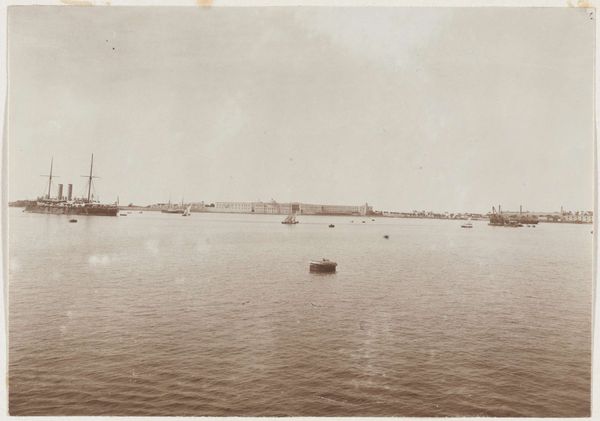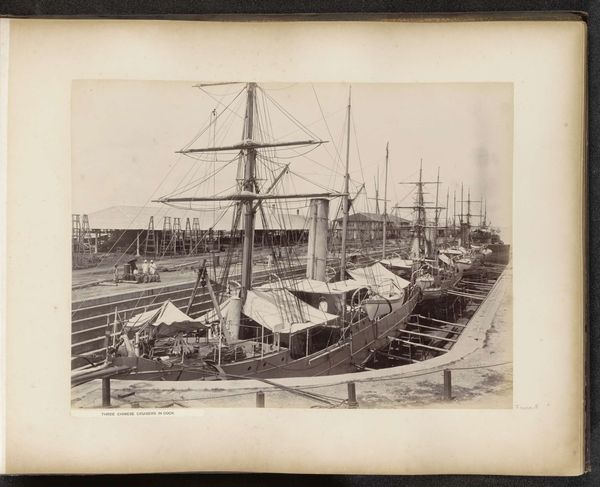
photography, gelatin-silver-print
#
16_19th-century
#
landscape
#
river
#
photography
#
historical photography
#
orientalism
#
gelatin-silver-print
#
19th century
#
islamic-art
Dimensions: height 213 mm, width 271 mm, height 469 mm, width 558 mm
Copyright: Rijks Museum: Open Domain
Curator: This gelatin silver print captures a serene vista, entitled "Feloeken op de Nijl bij het eiland Roda in Caïro," placing us along the Nile, sometime between 1888 and 1895. The photographer is Jean Pascal Sébah. Editor: There's an incredible stillness to it. The monochromatic palette really emphasizes the texture of the water and the weathered façades lining the banks. The photograph oozes nostalgia, even for someone who's never been there. Curator: Absolutely. The boats themselves, the feluccas, are potent symbols. For centuries they’ve been essential to Nile commerce and life, connecting communities. In this photograph, they almost become emblems of a timeless Egypt. Editor: I’m intrigued by the way the image draws your eye along the river’s curve, it is so easy to get lost in the rhythm. I am struck by the hand of labor involved. Building these boats, operating them. Imagine the craft passed down, the sheer human energy reflected in those sails. What kind of timber did they have access to? I can already see its patterns within the aged boats... Curator: An important aspect to consider, of course. Though the photographer perhaps saw a grander symbol: of Egypt’s link to its ancient past, seen through the enduring image of these feluccas. Note how strategically they are positioned, catching the light like ancient artifacts themselves. Editor: True. And speaking of artifacts, let's consider Sébah's position as a commercial photographer in Cairo. Who was commissioning and buying these images? To what degree was this a crafted orientalist view, aimed at a Western audience hungry for exotic imagery? It gives a second layer to all the symbolism you were describing, making the material conditions so complex! Curator: The perspective of Orientalism further enriches this work; indeed. To recognize how Sébah's photographs served both as document and perhaps a romanticized vision allows a more comprehensive view of this historical period and place. Editor: Absolutely. This image opens up so many avenues for investigation, bridging aesthetic beauty with social and material histories. Curator: Precisely, providing insight into the cultural memory interwoven in its composition and theme. Editor: And it pushes us to confront the means and context of representation itself.
Comments
No comments
Be the first to comment and join the conversation on the ultimate creative platform.
